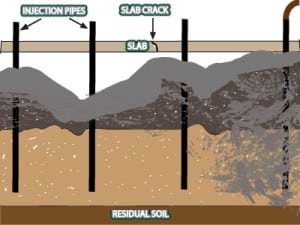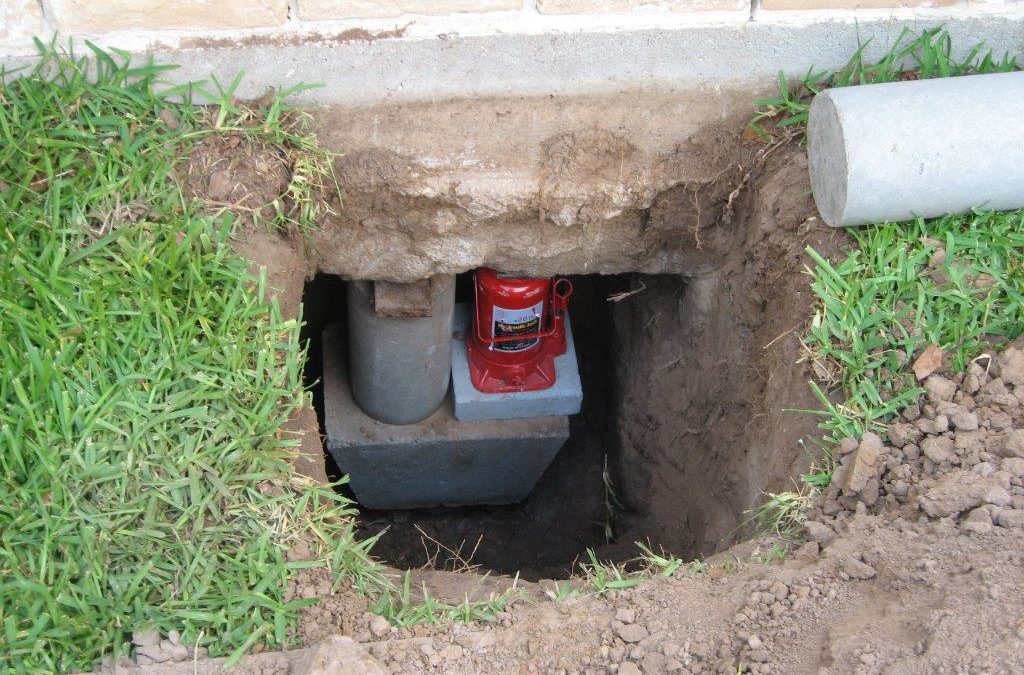Foundation Fixing Techniques: An Extensive Summary
Structure Repair Techniques: An Extensive Review
Foundation issues can trigger substantial architectural damage to buildings, jeopardizing their security and safety and security. Understanding foundation repair service strategies is essential for designers, home owners, and contractors included in construction and maintenance projects. This detailed review provides an in-depth assessment of numerous methods utilized to resolve structure problems, ensuring a secure and strong structure for any kind of framework.
The guide covers important strategies such as slab jacking, pier and beam support, cellar wall anchoring, soil stablizing, and structure base. Each method is described thorough, highlighting its performance, purpose, and application. FCS Foundation Repair Dallas. Furthermore, the review talks about aspects to take into consideration when choosing the suitable fixing method, such as soil conditions, developing kind, and budgetary restrictions
Whether you are a home owner seeking to deal with structure concerns or a professional in the building sector, this extensive introduction works as a valuable resource, supplying crucial knowledge and insights into structure fixing techniques.
Slab Jacking
Piece jacking, usually utilized as a trustworthy and regularly used approach, increases sunken concrete pieces by injecting a supporting product below, effectively restoring the foundation to its initial degree. This strategy is frequently made use of in scenarios where the ground has actually cleared up or moved, causing concrete slabs to sink or become irregular. Piece jacking is a cost-effective choice to entirely changing the concrete, as it deals with the root cause of the trouble and supplies a lasting service.

One of the significant benefits of piece jacking is its minimally intrusive nature. The little holes drilled for the shot procedure can quickly be patched, leaving no visible signs of repair. In addition, piece jacking can be finished rapidly, commonly within a day, lessening interruption to the homeowner. This method is appropriate for a large range of concrete structures, consisting of driveways, pathways, outdoor patios, and basement floorings.
Pier and Beam Of Light Reinforcement
An additional typically used method in structure fixing is pier and beam support, which builds on the previous approach of slab jacking to give additional architectural support and security to the foundation. This method is particularly beneficial in locations with weak soil problems or when the foundation has actually suffered substantial damage.
Pier and light beam reinforcement includes mounting vertical concrete or steel piers underneath the foundation to transfer the weight of the framework to much deeper, much more steady dirt layers. These piers are strategically put along the border of the structure and at interior load-bearing wall surfaces to equally distribute the tons and protect against further settlement.
To strengthen the light beams, additional steel or concrete supports are contributed to enhance and maintain the existing beams. This is done by attaching steel brackets or beam of lights to the existing light beams and safeguarding them with bolts or various other bolts. The support products are chosen based on the particular demands of the structure and the level of the damages.
Pier and light beam support not only offers instant support to the foundation however likewise assists to stop future settlement and architectural damages. Pier and Beam Foundation Repair Dallas. By redistributing the load and transferring it to stronger soil layers, this strategy ensures the long-term stability and stability of the structure
Cellar Wall Surface Anchoring
Basement wall surface anchoring is a crucial method used in foundation repair work to enhance the security and architectural stability of the foundation, particularly in locations vulnerable to soil movement and cellar wall surface failure. When the soil around a foundation experiences extreme dampness or shifts because of geological variables, it can put in substantial pressure on the basement walls, causing them to break, bow, or perhaps collapse. This can lead to major architectural concerns and jeopardize the safety and security of the whole building.
Cellar wall securing includes mounting specialized anchors or helical tiebacks right into the ground beside the foundation wall surfaces. These anchors are created to penetrate deep right into stable dirt or bedrock, creating a solid connection in between the ground and the structure. By distributing the tons of the foundation uniformly and resisting the side forces put in by the dirt, basement wall surface securing offers added support and protects against further motion or wear and tear of the wall surfaces.
There are various sorts of cellar wall securing systems available, including steel wall surface anchors, helical tiebacks, and carbon fiber bands. The choice of system depends upon variables such as the intensity of the wall motion, dirt problems, and the specific demands of the foundation. Specialist foundation repair service contractors analyze these factors and suggest one of the most appropriate securing solution for each and every unique circumstance.
Dirt Stablizing
To address the challenges of soil motion and make certain the security of foundations, soil stabilization techniques are utilized in foundation repair service. Dirt stablizing describes the procedure of boosting the buildings of the soil to enhance its load-bearing capability and lower its susceptibility to movement. There are several techniques used for soil stabilization, each tailored to the specific characteristics of the soil and the requirements of the structure.

Mechanical stablizing is another commonly utilized approach that involves the physical modification of the soil. This method consists of approaches such as compaction, which enhances the density of the dirt, and dirt replacement, which involves eliminating weak dirt and changing it with even more secure products.
Additionally, soil stabilization may likewise include the usage of geosynthetic basement wall sealer products like geotextiles, geogrids, or geocells. These materials are put within the soil to strengthen it and distribute the tons a lot more uniformly, minimizing the threat of negotiation or heave.
Structure Base
Just how can structure support properly resolve the obstacles of soil movement and ensure the stability of frameworks? Structure support is a technique used to reinforce and maintain existing foundations that have been impacted by soil activity. This approach entails prolonging the depth or breadth of the foundation to a more stable dirt layer or rearranging the lots throughout a larger area, therefore boosting its load-bearing capability.
There are a number of types of structure base methods typically used in the sector. One method is mass concrete support, where brand-new concrete is poured under the existing structure to enhance its deepness and security. Another strategy is beam of light and base underpinning, which entails building reinforced concrete light beams underneath the existing foundation, moving the load to much deeper, much more stable dirts.
Helical pile support is likewise commonly utilized. It involves mounting helical piles right into the ground below the structure, which offer added support and security. These stacks are screwed right into the soil and can be made use of to transfer the lots of the structure to even more proficient soil layers.
Final Thought
Finally, foundation repair methods play an important duty in maintaining the architectural integrity of buildings. Piece jacking, pier and beam support, cellar wall anchoring, dirt stablizing, and foundation base are all effective techniques made use of to deal with structure issues. By carrying out these techniques, homeowner can make certain Get the facts the stability and safety and security of their structures for many years ahead.
Basement wall anchoring is an essential technique made use of in foundation repair work to boost the stability and structural honesty of the structure, particularly in areas prone to soil motion and cellar wall surface failure.To attend to the obstacles of dirt movement and ensure the stability of foundations, soil stabilization techniques are used in foundation repair. There are several methods used for soil stabilization, each tailored to the specific qualities of the soil and the requirements of the foundation.
Foundation underpinning is a technique used to strengthen and stabilize existing structures that have actually been influenced by dirt motion. Slab jacking, pier and beam of light reinforcement, basement wall anchoring, dirt stablizing, and foundation support are all efficient methods made use of to resolve structure problems.